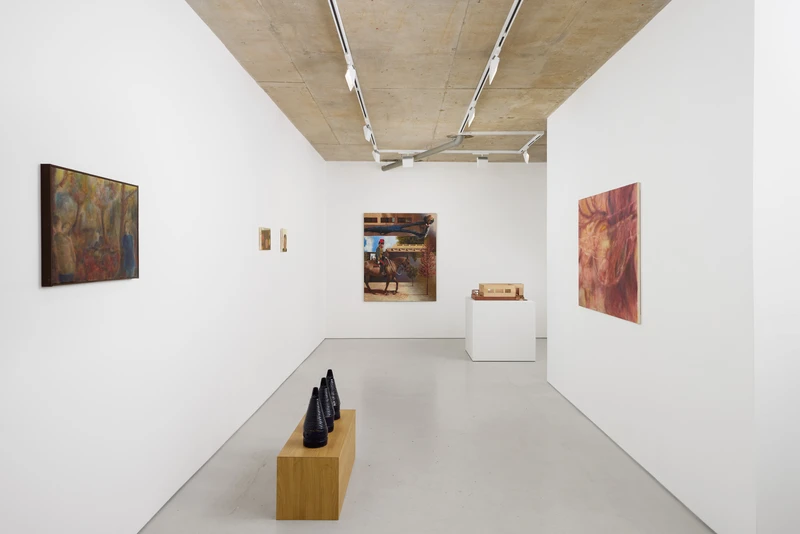Panta Rhei
12 Jul-10 Aug 2024
PV 11 Jul 2024, 6-8pm


"Not long ago I went on a summer walk through a smiling countryside in the company of a taciturn friend and a young but already famous poet. They admired the beauty of the scene around us but felt no joy in it. He was disturbed by the thought that all this beauty was fated to extinction, that it would vanish when winter came, like all human beauty and all the beauty and splendour that man has created or may create. All that he would otherwise have loved and admired seemed to him to be shorn of its worth by the transience which was its doom."[1]
Alice Amati is pleased to present a group exhibition including eight British and international artists reflecting on the possibility of coming to terms with the concept of change as an intrinsic and inevitable aspect of life. Drawing inspiration from the Greek philosopher Heraclitus, who famously posited that we can never step into the same stream twice as "everything flows" — or "Panta Rhei" in Ancient Greek — this exhibition underscores the idea that both our surroundings and our inner selves are in a constant state of flux. It creates dialogues between artists who are concerned with this daunting yet liberating aspect of the human condition and address it from different perspectives. Responding to the ever-changing world they inhabit, each artist presented questions how, if at all, we can know our moving world and our place within it when our life is defined by change, both in our environment and within ourselves.
The realization and acceptance of the inevitable transience of what surrounds us is both the starting point and the driving force for the artists in the exhibition. Minami Kobayashi, Merve Ceylan, and Nicholas Marschner find solace in the ephemeral nature of our existence through the lasting memories of their past, building the surface of their canvases or excavating them until images of distant moments make themselves visible again. Sophie Birch looks for the traces or the aura left from the passage of all things in this world. Her painting exists in this search, embodying the changes they are trying to capture. Similarly, J.A. Feng creates richly textured surfaces on which emotional narratives of transformation emerge. Grundy and Droescher turn to elements from the natural world surrounding them, such as withering flowers or bodies of water, to offer a comforting stance on the transience of the world. Through their poetic and inquisitive works capturing the interaction between man and nature, they suggest that the time limitations on our enjoyment of the latter and its unpredictability are what make it more valuable. On the other end of the spectrum, Creasey observes the unstoppable transformation happening not only in nature but within our built urban environment. Characters inhabiting upside-down yet familiar landscapes become proxies for the artist’s own experience of coming to terms with change in his surroundings.
Acknowledging that these artists reflect on our inherent need to capture the fleeting nature of our surroundings, and questioning whether this is achievable at all, the exhibition will not remain a static presentation. Instead, it will be restructured twice during its duration by invited curators. Kiera Blakey (Curator and Director of New Contemporaries) and Matan Daube (Curator and Director of the Igal Ahouvi Art Collection) will each intervene in the arrangement of the exhibition at different times, deciding what, if anything, should change.
[1] Freud, S. (1916). Vergänglichkeit (A. J. Grunthaler, Trans.). In Das Land Goethes 1914-1916. Stuttgart: Deutsche Verlagsanstalt. (Original work published 1915)